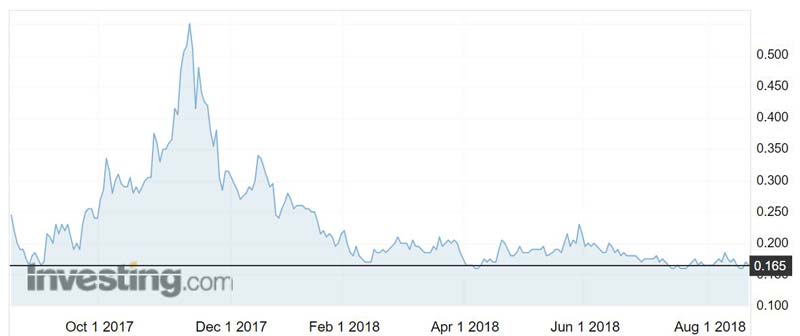Pilbara explorer Artemis nabs palladium project – but wants it for the gold
Mining
Mining
Artemis Resources has earned a 70 per cent interest in a palladium project in the West Pilbara region of Western Australia.
Artemis — which hunts base and battery metals but is best known for its Pilbara gold efforts — says the site, called “Munni Munni”, is the biggest unmined palladium deposit in Australia.
Palladium is one of the so-called “platinum group metals” (or PGMs) which also include platinum, ruthenium, rhodium, osmium and iridium.
Australia has no track record as a player in the platinum group metals sector — but rising demand from car makers is prompting a few ASX-listed explorers to take a closer look.
Munni Munni has a resource of 1.1 million ounces of palladium, 830,000 ounces of platinum, 152,000 ounces of gold and 76,000 ounces of rhodium.
To earn its 70 per cent, Artemis (ASX:ARV) had to spend $750,000 on the project.
But it’s not so much the PGMs Artemis is interested in – it’s conglomerate gold.
Conglomerate gold refers to nuggets hosted in rock featuring rounded grey quartz pebbles and other minerals. The world’s most productive gold region, South Africa’s Witwatersrand Basin, is famous for its conglomerate geological formation.

The Munni Munni project adjoins other joint venture tenements owned by Artemis and is located about 20km from its wholly owned Radio Hill operations – where the company plans to process conglomerate-hosted gold.
In mid-July, Artemis won the first of three approvals needed to upgrade its local Radio Hill plant so it could recover coarse conglomerate-style gold nuggets and fine free gold.
Artemis and its Canadian partner Novo Resources ignited a new gold rush in the Pilbara when they uncovered what was described as “watermelon seed nuggets” south of Karratha in July last year.
Novo chairman Quinton Hennigh told reporters at the recent annual Diggers & Dealers mining forum in Kalgoorlie, WA that he thinks Novo has uncovered the source of the region’s nuggetty gold.
While Artemis assessed the possibility of mining the PGM resource and identified opportunities to increase the current resource at the Munni Munni project, it also uncovered potential gold opportunities.
“Gold is our primary focus at the moment,” executive director Ed Mead told Stockhead.
“On the PGEs [platinum group elements] we’d have to effectively do a full metallurgical study to work out how to produce a saleable product, and gold was the one thing that was never explored for and we already know there’s a lot of gold up in the area.”
The Munni Munni project neighbours the Purdy’s Reward joint venture between Artemis and Novo.
Artemis has reviewed several drill logs and drill holes to better define possible conglomerate or paleoplacer gold.
The company recently undertook surveys over the Munni Munni project and is waiting on the results.
Still looking for PGMs
While Artemis is more interested in the conglomerate-hosted gold potential of the Munni Munni project, it is still looking at upgrading the PGM resource.
PGMs are a key material used is in auto catalysts — a critical part of catalytic converters used to reduce pollution in 98 per cent of cars. (The International Platinum Group Metals Association calls auto catalysts “the most important pollution abatement device ever invented”.)
Other applications include jewellery, fuel cells and industrial products ranging from computer hard disks to dental crowns.
South Africa, Russia and Zimbabwe account for about 85 per cent of global PGM production.
The bulk of Australia’s PGM resources are in Western Australia and the Northern Territory, but there are very few explorers looking for PGMs here — and until recently there were no pure play PGM companies.
“We did some initial studies and that prompted us when we looked at it to do some trenching and more drilling close to surface,” Mr Mead said.
“So we’re still waiting on the results of that work. Once we get that we can then look at converting the resource from [JORC] 2004 to 2012.”
JORC refers to the mining industry’s official code for reporting exploration results, mineral resources and ore reserves, managed by the Australasian Joint Ore Reserves Committee.